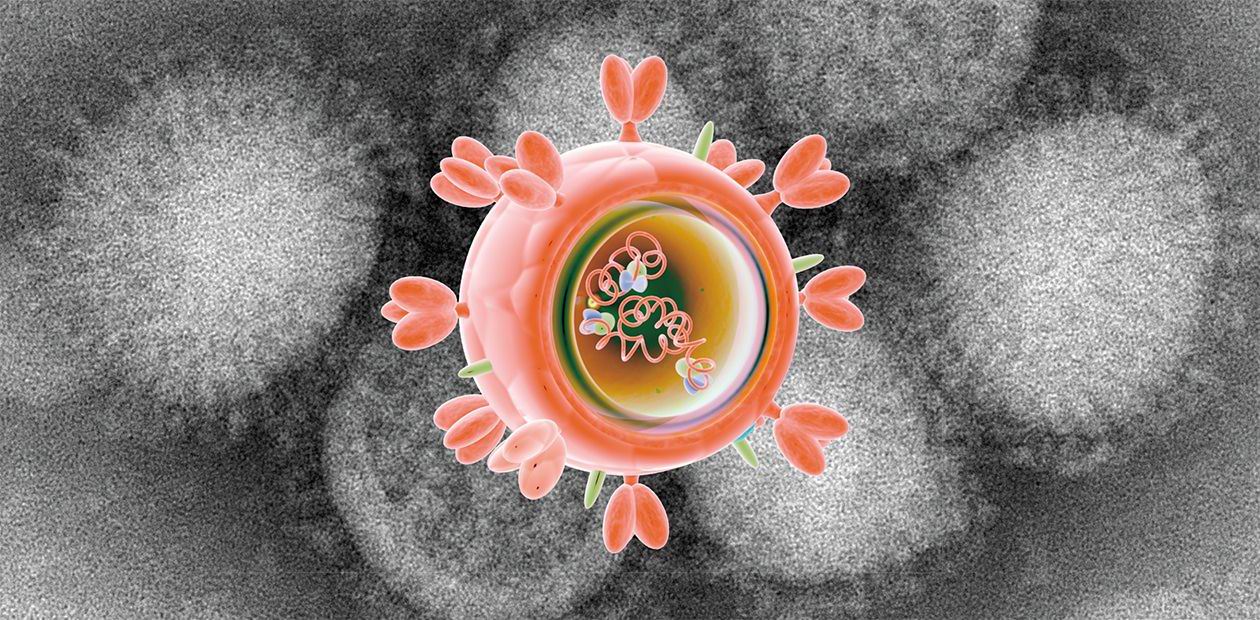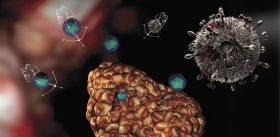Swine Flu: Frequently Asked Questions
AIDS, SARS, avian and swine flu… Special virological and molecular biological knowledge is necessary to puzzle out all these new infections. Below, an expert virologist from Novosibirsk Akademgorogok Sergei V. Netesov, corresponding member of the Russian Academy of Sciences, Vice Rector of Novosibirsk State University, acquaints us with the new variant of influenza virus, A/H1N1
What is the new influenza virus and what does the abbreviation H1N1 mean?
Type A influenza viruses are classified according to the sero- and genotypes of their surface proteins, hemagglutinin and neuraminidase. Correspondingly, these strains are denoted with the antigenic formula HmNk, where m and k are the numbers assigned to the subtypes of these proteins.
The main natural hosts of type A influenza viruses are aquatic birds; however, several influenza virus subtypes periodically circulate in other vertebrates – pigs, horses, and marine mammals, and, of course, in humans.
The current swine influenza has the known subtype H1N1; however, it is a new hybrid variant, and specialists are in the progress of untangling this issue. It is typical that this strain has appeared as a result of reassortment (mechanical “mixing” of genome fragments) of several influenza virus strains in densely populated Mexico (or, possibly, in the as heavily populated American state of California).
How dangerous is the new strain to humans?
The swine flu morbidity and mortality situation as of June 24, 2009, is the following: overall, 55, 867 cases were recorded and confirmed by reliable clinical tests with a total of 238 lethal cases (the WHO data). Thus, the mortality rate amounted to less than 0.5 %.
Over 21, 000 of these cases were recorded in the United States, where the number of lethal cases was 87. Consequently, the mortality rate in the United States is even lower, being comparable with the mortality rate of the common seasonal flu. Taking into account that the annual mortality for all types of flu cases in the United States is 35,000–40,000 people, the new virus adds less than 0.05% to this rate.
Thus, the mortality level determined by the new influenza virus variant is much lower than that of the avian influenza virus of H5N1 subtype, which caused human disease in 1997 and 2004–2009 mainly in Asia. At that time, almost half of the sick people died. However, the morbidity rate of swine flu and the degree of its contagiousness appeared much higher as compared with the avian flu. This is why WHO decided to raise the estimate for the threat of influenza pandemic from five to six (on a six-grade scale).
What are the current research activities on this virus?
This new virus is most intensively studied in the Centers for Disease Control and Prevention, the main governmental organization for disease diagnostics and treatment in the United States (Atlanta, Georgia).
The American virologists were the first to find out that this virus is a reassortant of several influenza virus strains. According to their data, many isolates of the new virus recovered from different patients are resistant to amantadine and rimantadine. These drugs are inhibitors of the viral protein M2, which forms ion channels in the lipid membrane of the pathogen. For many years, amantadine and rimantadine were successfully used for prevention and therapy of seasonal flu; however, they appeared ineffective in this case.
Luckily, this virus is for the time being sensitive to tamiflu and oseltamvir—the drugs inhibiting neuraminidase, one of the most important virus-specific enzymes. However, some data suggest that this new virus can also acquire resistance to these drugs.
Isolates of this virus are already available for the Russian scientists from the Institute of Influenza, Russian Academy of Medical Sciences (St. Petersburg), Ivanovsky Institute of Virology, Russian Academy of Medical Sciences (Moscow), and State Research Center of Virology and Biotechnology Vector (Novosibirsk). The research commenced aims to improve specific diagnostic tools, to detect the degree of protection of the population already immunized with the common seasonal vaccine, and, certainly, to develop the vaccine.
In addition, Russian scientists will test these viruses for drug resistance, because we have our own achievements in the field of antivirals. Domestic drugs may prove efficient in inhibiting this virus.
Is it feasible to create a vaccine against A/H1N1 influenza?
It is entirely feasible to develop a vaccine for the new influenza virus. This is now one of the most important directions in Russian research.
In particular, experts from the Institute of Influenza are able to create such vaccine in several months using traditional methods tried and tested at the Institute.
In addition, it is possible to make such vaccine using methods of genetic engineering and reverse genetics even without any initial specimen of the swine flu virus based on the data on the nucleotide sequence of its genome. Specialists from the Novosibirsk Center Vector can cope with this problem. The only thing they need is about 12–15 million rubles for creating the corresponding genetic construct and approximately the same sum for producing and testing the future candidate vaccine strain.
Note that the population cohort vaccinated against seasonal flu in the United States is considerably larger as compared with Mexico. This can be a likely explanation for a significant difference in the mortality rates in these two countries, although this conclusion requires an accurate verification.
How high are the probability of a global pandemic and the probability that the flu will reach Siberia?
Once appeared, the new flu variant entered almost all continents.
From the very beginning, the ingress of this infection to Russia was very likely taken how active Russian tourists and all Russian citizens are. As of June 2, there were three confirmed swine flu cases confirmed by laboratory tests (this number did not change by June 24). Therefore, all the efforts and activities of the Rospotrebnadzor (Russian Federal Service for Surveillance of Consumer Rights and Human Welfare) and other public health care and veterinary surveillance services are justified.
As for the analogous efforts in the United States, they also do their best to stop the epidemic and, judging by the dynamics of the process, are making progress. The probability of an epidemic in the countries with few swine flu cases is minimal.
In principle, it is possible to mitigate the strict restrictions imposed on international trips. On the other hand, it is reasonable to attentively monitor the health condition of those coming to Russia from the countries with recorded swine flu..














